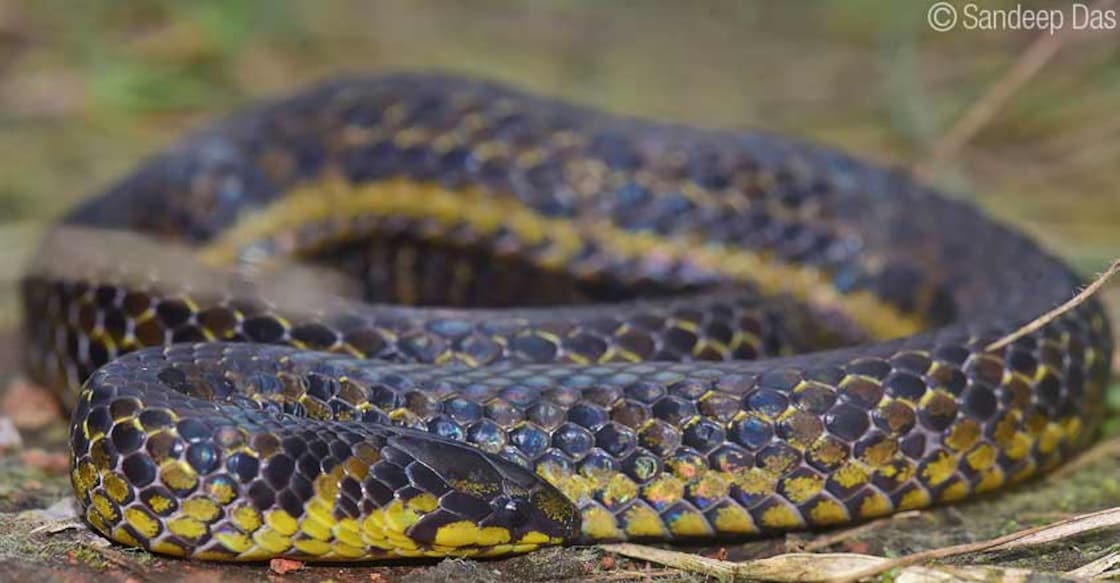Scientists discover new snake species from Western Ghats

Mail This Article
Researchers have discovered a new species of wood snake (Xylophis) at Anamalai Hills of the Western Ghats. The snake, Xylophis mosaicus sp. nov,was found basking near a trench near a forest camp at Eravikulam National Park in Munnar in 2015 during their field work by Sandeep Das and K P Rajumar, researchers of Kerala Forest Research Institute.
Though it had resemblance to a similar species of Gunther's wood snake (Xylophis perroteti) found in mountain tops of Nilgiris, Sandeep had doubts regarding the identity based on morphology because of its disjunctive distribution and the previous studies about the uniqueness of the hilltops.
V Deepak, a herpetologist from Natural History Museum London (NHM) and the lead author of the study , checked the collections from NHM and National Museum of Natural History (MNHN) in France and confirmed that the newly found snake was of another species. The molecular relationship of both Anamalai and Nilgiris population was checked and proved that the new one from Anamalai was of a new species. P S Easa and K A Sreejith of Kerala Forest Research Institute also collaborated along with Dr David Gower from NHM, London, Surya Narayanan from Wayanad Wild to check more museum based specimens of both the population and describe the new species.

The new snake Xylophis mosaicus can be distinguished morphologically by its mosaic pattern on the body and its mosaic shola habitat. These snakes are mostly sub-fossorial that are often seen under the decaying logs and humus mixed soil. They are also seen basking on the ground and very active during the monsoon.
The new species is so far found only in high altitude shola grassland ecosystem of Anamalai hills including Eravikulam National Park, Meesapulimala and several older records from Kodaikanal in Tamil Nadu.

“Discovery of this species adds up one more new species in the Indian herpetofauna and also highlights the richness of the Anamalais. More research attention to the lesser known groups in the ecologically sensitive zones are necessary to understand the true richness and better conservation of these magnificent smaller creatures,” said Sandeep Das.
Anamalais, the land of elephants in the Western Ghats of India is one of the most diverse landscapes in the world with magnificent and unique flora and fauna with varying habitat types. The research states, “among these the most unique and interesting ones are the shola-grassland forests on the high elevations, that are also popularly known as the sky islands for the fact that they separated from the adjacent patches by deep valleys or a different habitat. Sky islands around the world are an interesting landscape to study the specific sets of biodiversity because of the unique evolutionary significance. The Nilgiris is one other and the closest sky island to the Anamalais with which it shares some common sets of animals because of their biogeographical history.”



